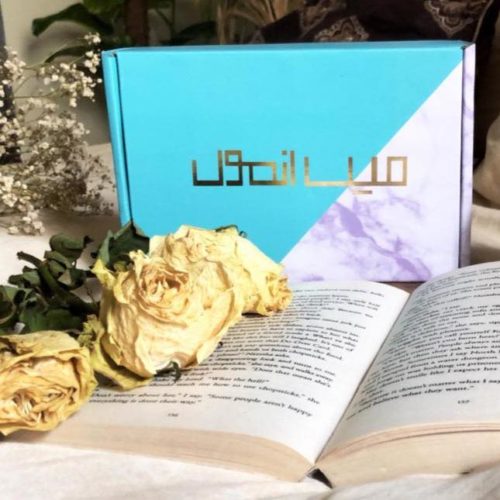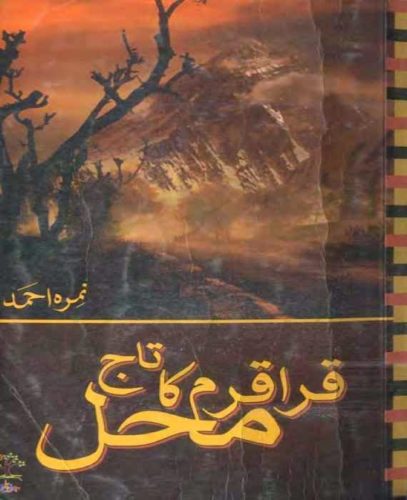Nimra Ahmed 10 Personal Facts, Biography, Wiki
When first novel of Nimra Ahmed was published in Khwateen Digest, readers were much enthusiastic about her relation with Umera Ahmad. For in the next month’s issue a reader asked are they sisters? but they were not. However, as the newer writer published more of her pieces she tend to resemble the older in her theories- focusing the story on Islam and plotting the story in unfamiliar territories and making them familiar through her story. Umera and Nimra have some common features. First novel of both was well-celebrated. Both enjoy an honorable name in Urdu literature. Both show a love towards discovering new ideas and playing with them. And, see, both writers have names ending with Ahmed. But these similarities does not make either of them a replacement of other. Why? Their fans know very well. One apparent reason is that there are only a few quality Urdu women writer. But there are bigger reasons also to have both in one’s to-read list. The reason is difference in emotion both focus on. Umera lives in reality. She sketches a life close to reality. She is practical and does not support characters that are sentimental and emotional. For example in her latest novel she shows the innocent and childish character of Shehr Bano in losing position just because she had heart that ached but not a brain that thought. Nimra lives in fairy tales. Her world is based on love and strength. She, too, does not support emotions and sentimentality, but this she does with by not eliminating weak people from her character list, not by showing them and their distressed life. Umera compares. All her novels show a blend of strong and weak humans. Whenever she writes a character around some specific emotion or quality, she shows another in her novel that is just opposite. Nimra’s characters are not mirror images. They don’t have exactly opposite features rather they have personality traits which are same. This is apparent in her story “Sans Sakin Thi” when both hero and heroine avengers by nature, or in “Jannat K Patte” where both are fast reactors. Both show the necessity of courage in a woman’s life. But Umera shows as a protection while Nimra shows it as a duty-a duty to society at large. Besides, Umera tend to show her readers the difficulties, which are irrelevant to lives of most of them; and Nimra shows luxuries, which most of them do not possess. In this way Umera paints her story a little grayer while Nimra paints it Greener. In my opinion one is optimistic and other pessimistic. So whose style you prefer? Nimra Ahmed and Umera Ahmed
Nimra Ahmed 10 Pics, Photos, Pictures
Nimra Ahmed 10 Fast Facts, Biography, Wiki
Nemrah ahmed (also known as nimra ahmed or nemrah niazi) is a young pakistani novelist. A simple article should start like this to describe any writer, but when we talk about Nemrah Ahmed, it is totally opposite. At the tender age of 21, she has become the most popular, most discussed and somewhat controversial young novelist in the world of Urdu digests (Khawateen digest etc). This article throws ample light on her achievements as well as her failures so far in the literary world of Urdu literature. Just like stars on the galaxy, or rain drops falling from the infinite sky or uncountable grains of sand present out there, can be logically compared with the diversity, vastness of subject, metaphorical style, foregrounding of high degree and almost use of all such literary devices can be found in Nemrah’s writing. A magician with the words, words play in her hand, topics feel honored to be chosen by her- this is Nemrah Ahmed and her novels. I’ve just started to open the Pandora box of her creative writing, just a few little things jumping out of it. Whether it is, “Pareeshay” of “Karakuram Ka Taj Mehal” or “Mehmil” of her latest novel “Musha’f,” there is always a treat for her fans to cherish on. Her writing style is research biased and well-sort out. In “Baili Rajputan Ki Malika,” she takes us to the strange world before partition of sub-continent, this peculiar setting of the novel demands high literary skills to do justice to it, and she successfully achieves it. On the contrary, “Pahari Ka Qaidi,” which is a short fiction by her, depicts the injustice in the justice department of pakistan- her foreground of, ” Pahari Ka Qaidi (Man Captured In Mountains),” has a lovely moral that no matter how hard the tyrant may come at you, one day you will strive back and win your freedom. This novel was a realistic picture of the political unrest of pakistan prevailing at that time. What a stunning achievement by this young writer! In “Mereay Khawab Meray Jugnu,” her style is somewhat under lot of criticism. This was her earlier novels, and many flaws and occasional mistakes were rightly expected. However, the story is awesome and the love of two sisters for one man turns out to be a triumph eventually. It was a great success as well, although her later novels increased her fan strength to a much larger number. Nemrah’s fans happily agree on calling, ” Karakuram Ka Taj Mehal,” as her top and number one novel so far. This sensational novel is based on mountain climbing, and her characters are artistically woven into action, dialogues are crispy,story is breathtaking, style is topnotch all the way. The ending was a little on the low side as compared to the overall quality of the novel, and Nemrah herself admitted that she could not end this novel as she’d prefer to. Overall, it was a major hit and is published in book form as well. Nemrah Ahmed is making a marvelous literary recovery in her latest novel, “Mushaa’f,” a novel which is one of its open kind. It is written on the sensitive issue of understanding and interpreting the Holy Quran. This novel takes us on an emotional roller coaster. Most critics and few readers talk about the controversial issues of Nemrah as well. For instance, she uses plagerised themes and mostly from the English literature, her immature characterization, and above all, her loose grip on plot construction. To be honest, this criticism in not fake at all; she has many literary issues right now and she needs to learn a lot, improve her research as well as her writing style, which at times looks childlike. Nemrah is on a learning curve of time, with more experience, she should be able to write better enough to satisfy all her critics. One another major issue is her mysterious attitude. Nemrah dislikes to publish her picture or any contact number, even her e-mail is not available- many of her fans are curious, and some of her adversaries are bored of this stern attitude. I hope, she will care for her fans and be a little more open and frank toward them, since any writer is a public property, whether he or she likes it or not. Conclusively, there is a little doubt that the future of Urdu literature belongs to writers like Nemrah Ahmed, and that future is very near. The way to success is carrying her on and on to literary grounds of immense fame and popularity.
Frequent searches leading to this page



